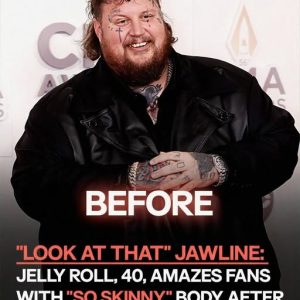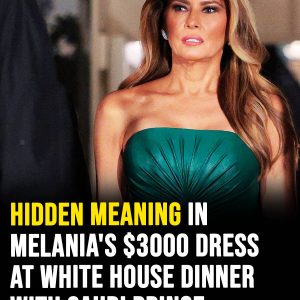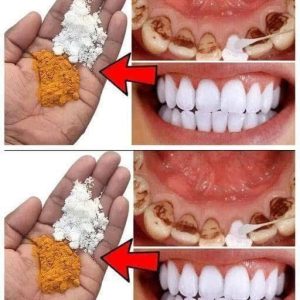Some women worry that their bust is too small, assuming it reflects low estrogen. Others wonder if having a fuller chest means their hormones are “too strong.” And still others feel pressured by ideals shaped far more by movies, magazines, and trends than by biology.
The truth, as it often does, sits somewhere calmer, clearer, and far less dramatic:
breast size can relate to hormones, but it is not a direct indicator of hormonal health — and never has been.
Understanding what truly shapes breast development helps women separate fiction from fact and approach their health from a place of empowerment rather than fear.
Biologically, breast size is determined first and foremost by genetics. Long before puberty, long before hormones begin to orchestrate change, the blueprint for breast tissue — how dense it will be, how much fat it tends to store, how responsive it will be to hormonal shifts — is written into DNA.
Hormones play a role, of course. Estrogen contributes to the development of breast ducts; progesterone encourages the formation of glandular tissue. These changes surge during puberty, rise again during pregnancy, ebb and flow with menstrual cycles, and shift significantly during menopause.
But hormones operate within the structure genetics provides.
Two women with similar estrogen levels can have entirely different breast sizes.
Two sisters raised in the same household may look nothing alike in the chest area.
A woman with a small bust is not “missing” hormones, and a woman with a larger bust is not “overflowing” with them.
Breast size is a physical trait — not a diagnostic sign, not a symbol of health, not a measure of womanhood.
Despite this, myths persist.
One of the most stubborn misconceptions is that smaller breasts signal low estrogen, low fertility, or hormonal imbalance. There is no scientific evidence to support this belief. A small bust doesn’t predict reproductive issues. It doesn’t reveal anything about cycle strength, ovulation quality, or hormonal balance.
Another common misunderstanding is the opposite: that larger breasts reflect “better” hormonal function. In reality, breast volume is strongly influenced by body fat percentage. Because breasts contain fatty tissue, someone with a higher BMI may naturally have a fuller chest — not because their hormones are stronger, but because their body stores fat differently.
This can create confusing assumptions. When health risks associated with high BMI appear in research, people sometimes mistakenly associate those risks with breast size rather than the underlying metabolic factors.
Breast size itself doesn’t cause disease.
It doesn’t protect against or predispose anyone toward hormonal illness.
It simply exists — a part of the body, not a prophecy.
This is not to say breast size has no impact at all. Larger breasts can lead to physical strain, including back pain, shoulder tension, and discomfort during exercise. Many women with fuller chests know the quiet frustration of searching for supportive bras or navigating sports that aren’t designed with their bodies in mind.
But those challenges are structural, not hormonal.
Smaller-breasted women, on the other hand, sometimes face social pressures instead — the quiet comments, the assumptions about maturity, desirability, or femininity. These pressures have everything to do with culture and nothing to do with health.
When women begin to understand how breasts actually develop, those cultural messages lose their power.
If breast size is not a hormonal map, what is?
Real hormonal wellness reveals itself in internal rhythms rather than external measurements. Signs of well-balanced hormones include:
-
regular, predictable menstrual cycles
-
stable mood and energy levels
-
healthy sleep patterns
-
normal appetite and digestion
-
manageable stress
-
consistent metabolism
-
balanced skin and hair health
These indicators paint a far clearer picture than a bra size ever could.
Supporting hormonal health, then, comes down to habits, not physical shape.
A nutrient-dense diet is one of the strongest pillars. Hormones depend on vitamins, minerals, and fatty acids to function properly. Eating colorful fruits and vegetables, whole grains, clean proteins, and healthy fats provides the raw materials the endocrine system needs. Omega-3s from fish, flaxseeds, or walnuts help regulate inflammatory pathways that influence hormonal balance.
Exercise is another powerful tool. Movement helps regulate insulin, reduce stress hormones, and support circulation. It doesn’t need to be intense; even gentle walking, yoga, swimming, or light strength training can keep the body in a steady rhythm.
Stress management often plays the quietest yet most influential role of all. Chronic stress can disrupt cycles, increase fatigue, and alter hormonal patterns. Mindfulness, journaling, slow breathing, taking breaks, spending time in nature — these small acts help reset the nervous system and, by extension, hormone production.
Sleep is equally essential. Hormones repair themselves during deep rest, and lack of sleep can throw major systems off balance.
Some women explore natural remedies as part of their wellness routine. Evening primrose oil is frequently used for PMS, vitex for cycle support, maca root for energy and mood, sage tea for menopausal comfort, and ginger for inflammation or cramping.
These tools can be helpful — but they are not universal cures, and they’re most effective when used thoughtfully. Individual biology matters. Consulting a professional ensures supplements support, rather than disrupt, hormonal balance.
The most important thing is understanding that the female body is diverse, and breast size reflects that diversity. Comparing busts tells us no more about health than comparing nose shape or height. Some women naturally develop fuller chests; others develop petite ones. Both are normal. Both are healthy.
So why do myths persist?
Because society often attaches meaning to physical traits that science never assigned. For generations, breast size has been used as a symbol — of desirability, femininity, maturity, or strength. Advertisements, movies, and cultural expectations reinforce these ideas until they feel like truths.
But biology tells a different story.
When women start evaluating themselves through a realistic, fact-based lens, myth loses its grip. Suddenly breasts are just… breasts. Not diagnoses. Not judgments. Not reflections of worth.
In the end, focusing on breast size distracts from the elements of life that genuinely affect hormonal harmony — nutrition, sleep, movement, stress, age, and genetics.
A woman’s health is built from the inside out, not the outside in.
Breast size isn’t a verdict.
It’s simply one expression of the body’s natural diversity.
What truly matters is caring for the whole system — the mind, the hormones, the heart, and the body that carries them.
And when women understand that, they gain something deeper than measurement or comparison:
real knowledge, real confidence, and real well-being.





